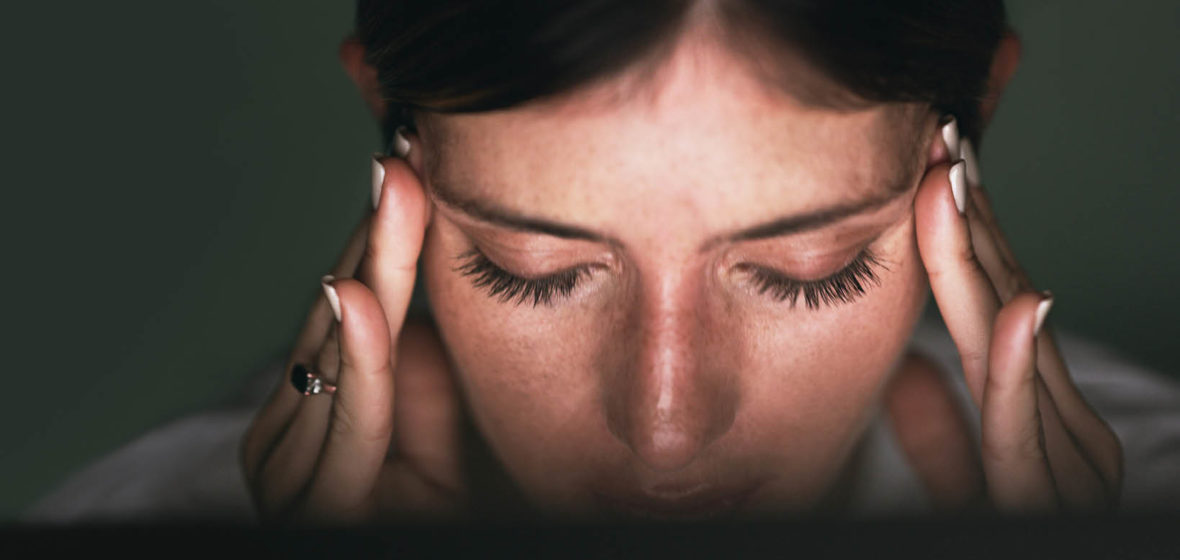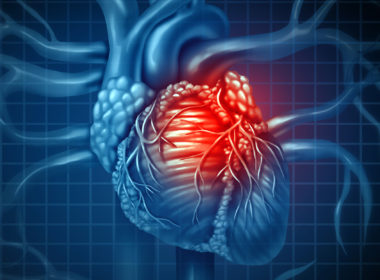Migraines are common among working-age Australians, and they can have a serious impact on wellbeing and productivity. What can be done to alleviate this disabling condition?
Do you get migraines or know someone who does? Almost five million Australians are affected by migraine, yet the condition is underdiagnosed and undertreated, likely due to social stigma or confusion with milder tension-type headaches.
But here’s the thing: a migraine is a lot more than a bad headache. Common symptoms include pain on one or both sides of the head that throbs or pulses, nausea, vomiting, extreme sensitivity to light and sound, impaired vision and numbness of the face. The condition has a significant impact on wellbeing and productivity at work, and the effects are often compounded because our peak migraine susceptibility years coincide with our most productive professional years.
Impaired function
“A migraine is a disabling neurological condition,” explains Carl Cincinnato from Migraine & Headache Australia, a not-for-profit that works to increase research and awareness around migraine and headache-related disorders. Compared to a tension headache that lasts for a couple of hours and is relatively mild in severity, a migraine can last four to 72 hours with symptoms ranging from moderate to severe.
Dr Nicole Limberg, a neurologist specialising in headaches and migraine at Migraine Specialist Brisbane, says the distinguishing features of a migraine are a high level of disability and impaired function.
“The pain is such that you can’t continue carrying on with whatever activity you’re doing,” she says.
Some people experience infrequent or perhaps monthly attacks, while chronic migraine sufferers have symptoms on at least 15 days a month. “There’s a spectrum of experience,” Cincinnato says.
It’s estimated that 18 per cent of women and six per cent of men are affected by migraine, and Cincinnato says one to two per cent of the population experience chronic migraine. The exact mechanisms responsible for the condition are unclear but genetics are believed to be a significant factor.
“More than half of patients have a first-degree relative who’s had the condition,” Dr Limberg says. “It’s also often a combination of genes that come together – if there isn’t a family history, you might still have a genetic tendency.”
Environmental factors are another important contributor, explains Cincinnato.
“Traumatic things that happen in early childhood, like emotional, physical or mental abuse, a string of injuries or concussions, being located in a dangerous and unsafe neighbourhood, and high levels of emotional stress – these are environmental factors that are known to precipitate migraine.”
Triggers
One of the most common triggers believed to account for the gender difference in prevalence is hormones – specifically, oestrogen.
“For women, the hormone changes are probably the number one trigger,” Dr Limberg says. “A couple of days before the period starts, oestrogen drops off sharply and that’s when women will often say is when they start getting migraines, and they will often continue for a couple of days into the period.”
Other triggers include food – chocolate, cheese, processed foods, citrus fruits – alcohol, caffeine, insufficient or too much sleep, oral contraceptives, bright or flashing light, strong smells, intense physical exertion and even changes in the weather. Stress can also contribute to the onset of migraines – especially in high-pressure professions like law.
“When you’re working more hours, you might be eating takeaway food or food that’s provided by the company that may not be the healthiest option, you may be compromising on sleep, you may not be exercising as much and you may not be having enough downtime to relax and unwind,” Cincinnato says. “When all those things get compromised, it can be extremely challenging to manage the condition.”
“Traumatic things that happen in early childhood, like emotional, physical or mental abuse, a string of injuries or concussions, being located in a dangerous and unsafe neighbourhood, and high levels of emotional stress – these are environmental factors that are known to precipitate migraine.”
Migraines are most common between the ages of 25 and 50 – especially for women, but a similar pattern is also observed among men. These are important years for building a career and days lost to migraine, whether you call in sick or not, can have a substantial impact on engagement, productivity and even professional longevity.
A 2018 report by Deloitte Access Economics found the productivity cost of migraines in Australia was $16.3 billion, with 86 per cent of sufferers of working age. Cincinnato says 90 per cent of people who experience a migraine attack are not able to work at their full capacity.
“While migraines may be very uncomfortable, debilitating and frustrating for the individual, when it happens at the workplace it’s the organisation that picks up the bill.”
Managing the risk
There’s no cure for migraines, so treatment focuses on stopping symptoms and preventing future attacks.
“The goal of migraine management is to increase your threshold so you can experience more triggers but not fall into a migraine attack,” Cincinnato says.
Conventional wisdom might suggest simply soldiering on – indeed, the World Health Organization reports only half of people affected by migraines in the US and UK see a doctor about the condition each year – but Dr Limberg says if you’re having more than four migraines a month a “migraine management plan” can make a significant difference to your health and prevent the condition from becoming chronic.
“The first thing we do is discuss lifestyle modifications – things like regular sleep patterns, not missing meals, avoiding food triggers, keeping your fluids up,” she says. “Regularity is important, even with stress and the way you’re managing stress. It’s about calming your thoughts and breathing so adrenaline and cortisol are not pumping up and down, because that can be very triggering as well.”
Cincinnato, who suffers from migraines, says it’s important to focus on triggers you can control.
“If I’m well slept, exercising regularly and eating well, then I can have every other trigger and it won’t tip me into a migraine because I’ve built up my resilience to that level.”
He says workplace wellbeing programs that promote healthy lifestyles can add another layer of protection – with added benefits for firms. As for medication, over-the-counter pain relievers like paracetamol or ibuprofen, or prescription drugs like triptans – which block pain pathways in the brain – can alleviate symptoms. Preventative medications might be recommended for people with frequent, long-lasting or severe migraines that don’t respond to other treatments.
Ultimately, says Cincinnato, migraine management “is a dynamic process that’s individual for every person. It comes down to knowing your condition, understanding your limits and being able to calibrate what’s going on around you accordingly.”




